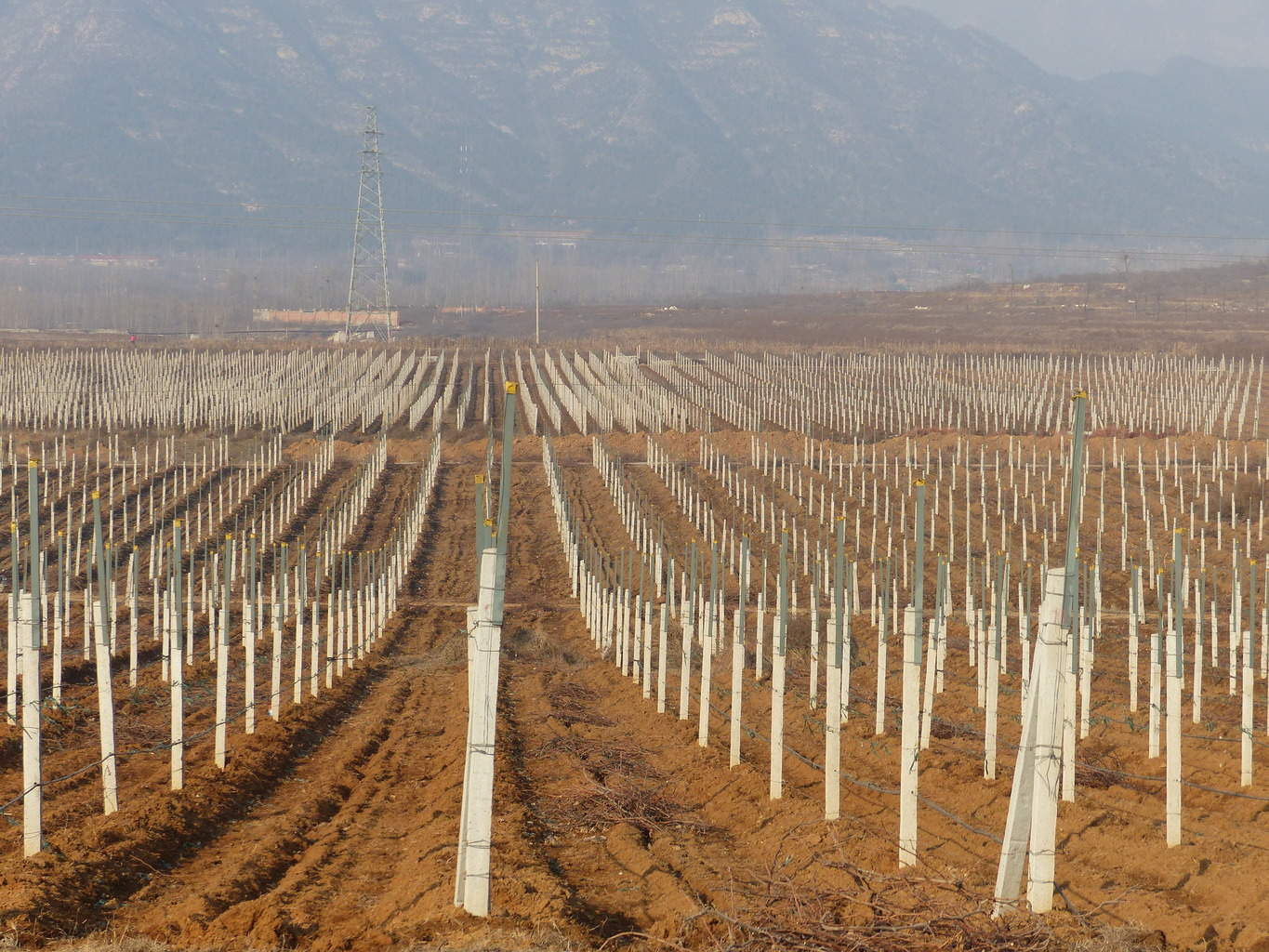The district of Fangshan, located on the south-western outskirts of Beijing, is a new wine region with just twenty-two chateaux covering 1,200 hectares of vines, eighteen of which have harvested at least one crop of grapes. The aim is to set up 60 chateaux over the next ten years. To distance itself from other regions, the local government has introduced an extremely strict winemaking policy: a ban on buying grapes elsewhere, use of estate-grown grapes only, ageing and bottling on site and yields s et at 7,500 kg of grapes/ha. Permitted grape varieties, vine density and winemaking techniques are defined by the region. Clones are supplied by a state laboratory which has a production capacity of 40,000 vines/year, which has so far restricted vineyard development. Organic certification for wine growing and winemaking is also being examined.
et at 7,500 kg of grapes/ha. Permitted grape varieties, vine density and winemaking techniques are defined by the region. Clones are supplied by a state laboratory which has a production capacity of 40,000 vines/year, which has so far restricted vineyard development. Organic certification for wine growing and winemaking is also being examined.
The Fangshan region owes its initial wave of prosperity to its production of marble. Over the years, its wealth has declined and new ideas are now needed to save jobs. Development of the wine industry is therefore being spearheaded by Fangshan.
The vineyard poses major challenges: high humidity, summer rainfall and winter frosts which make it compulsory to protect the vines for four months of the year. They are buried in the winter, which is very labour intensive. Leaf removal exposes the grapes to sunshine and promotes greater levels of ripeness. Vines must also be protected from the birds using gigantic nets supported by concrete posts. 2015 was particularly challenging from a weather perspective. Heavy, early snowfall toppled the posts onto 45 ha of vines where the nets had yet to be removed.
The entire vineyard is farmed organically: there are no weed killers, legumes are used as cover crops (groundnut) in alternate rows and fungicide sprays are kept to a minimum for example. Chaptalisation is banned and doses of sulphur are restricted to 120 ppm, which is less than Chinese and European standards of 160 ppm.
On December 5, 2015, we were expected for a first visit to the Olibali vineyard. The thirty or so hectares of Merlot and Syrah are planted on terraces abutting brand new dry stone walls that stretch for miles. At this time of year, the vines are buried. The vineyard has already harvested three crops. We did not taste any wines.

Domaine Olibali, vineyards
Next we visit Château Densiho, an estate that receives guidance from Guillaume Thienpont (Le Pin, Certan). Planting density is low so that the vines can be buried in the winter and adapted to suit the equipment. Yields in 2015 were also low at between 3,750 and 4,500 kg/ha. The first vines – Merlot, Cabernet Franc, Petit Verdot and Chardonnay – were planted in 2011, and the estate has recently added some Syrah. Irrigation is used in the spring to compensate for very low rainfall at this time of year. Total rainfall in 2015 did not exceed 480 mm. The clay-limestone soils are extremely rich and no fertilisers or organic matter input are used. Most of the wines currently made on the estate for now are rosés.

Château Densiho
Château Densiho – 2013 Chardonnay: clarified juice is fermented at 15°, malolactic fermentation occurs in casks with once-weekly stirring for two months. Lemony nose with a dash of vanilla. The palate is dry, probably due to the use of new oak.
Château Densiho – 2014 Chardonnay: in this case, the wine spent time in twice-used casks. Nose of tropical fruits. A better balanced and fairly tense wine.
Château Densiho 2014 Rosé: 70% Merlot, 25% Cabernet and 5% Petit Verdot. A well made rosé which could do with a little more tension. The consumer retail price is 150 RMB, which is over 20 euros – a price European producers would certainly be envious of.
Château Densiho 2015 Rosé: the wine is not completely ready but this is an excellent rosé with a lively palate showing red berry fruits. Very promising for the future.
Château Densiho 2014 Red: a blend of 75% Merlot, 23% Cabernet Franc and 2% Petit Verdot. Nose of black fruits and leather. The palate is driven by black fruits, with a cassis streak and Cabernet Franc edge. It nevertheless lacks phenolic ripeness. Could the soils be too fertile for this type of wine?
The third visit is to the ‘Les Millésimes’ estate belonging to the Chinese group Sigma whose core business is residential construction and IT. Sixty hectares of vines have been planted using two techniques: planting density of 3,300 vines/ha using 3×1 spacing and 9,000 vines/ha using 1.5×0.75 spacing like in Bordeaux. Pruning is from single basal shoots. The estate harvested its first crop in 2015 and produced a total 100 hl. Watch this space…
